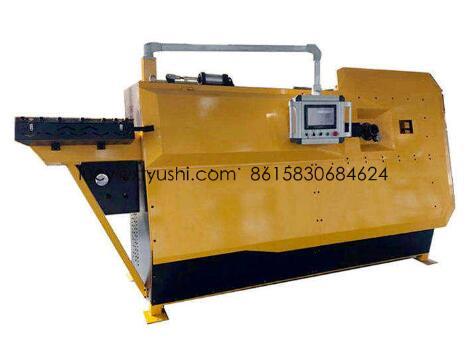In the construction and manufacturing industries, the stirrup bending machine is a vital tool designed to shape and bend steel bars or wires into precise stirrup forms. These stirrups are crucial in reinforcing concrete structures, providing strength, durability, and resistance against external forces. By automating what was once a labor-intensive and time-consuming process, stirrup bending machines deliver unmatched efficiency and accuracy, making them indispensable in modern construction projects.
This article explores the operating principles, key components, and benefits of using stirrup bending machines, alongside practical insights to help businesses optimize their production lines.
Loading: The rebar is inserted into the machine's bending area.
Positioning: The machine positions the rebar at the desired bending point.
Bending: The machine applies pressure to bend the rebar to the specified angle.
Release: Once bent, the rebar is released and ready to be removed.

What Is a Stirrup Bending Machine?
A stirrup bending machine is a piece of specialized equipment used to process steel wires or bars into stirrups of various shapes and sizes. These machines are often used in industries that require high-precision bending, such as construction and precast concrete production. With advanced control systems, stirrup bending machines can produce complex shapes while maintaining tight tolerances.
At JUSHI, we manufacture cutting-edge stirrup bending machines equipped with intuitive programming interfaces and high-speed motors, ensuring efficient operation and exceptional quality.
How Does a Stirrup Bending Machine Operate?
The operation of a stirrup bending machine can be broken down into the following key steps:
1. Feeding the Material
The process begins with the automatic feeding of steel wires or bars into the machine. The feeding system is equipped with rollers or belts to ensure smooth and consistent movement.
- Automatic Wire Feeding: Modern stirrup bending machines are equipped with servo motors that control the feeding speed and length, ensuring accuracy and efficiency.
- Material Options: These machines can handle various materials, including carbon steel, stainless steel, and other alloys, depending on the project’s requirements.
2. Straightening
Before bending, the steel bar or wire must be straightened. Stirrup bending machines have integrated straightening systems that eliminate curves or deformations in the material.
- Straightening Mechanism: A combination of rollers and precision guides ensures the material is perfectly aligned and ready for bending.
- Importance: Proper straightening enhances the quality of the final product and reduces material waste.
3. Bending Process
The core functionality of a stirrup bending machine lies in its bending mechanism. The machine utilizes a rotating bending arm and stationary pins to achieve the desired angles and shapes.
- Programmable Angles: Operators can set specific bending angles and dimensions using the machine’s control panel or software. Advanced models can store multiple configurations for different projects.
- Precision Control: Servo motors and CNC controls enable high-precision bending, ensuring uniformity across all stirrups.
4. Cutting
Once the bending process is complete, the machine cuts the stirrup to the programmed size.
- Automatic Cutting System: High-speed cutters are used to achieve clean and precise cuts, minimizing burrs or imperfections.
- Customization: The length of the stirrup can be adjusted according to project specifications.
5. Output and Collection
The finished stirrups are collected in a designated area or bin. Some machines also have automated stacking systems to streamline the process further.
Key Components of a Stirrup Bending Machine
Understanding the components of a stirrup bending machine helps in appreciating its capabilities and choosing the right model for your needs.
- Control System: CNC systems enable programmable operations and easy adjustments, often using touchscreen interfaces.
- Feeding and Straightening Mechanism: Servo motors ensure precise feeding and alignment of materials, reducing errors and improving efficiency.
- Bending Arm: Rotates to achieve specific angles while stationary pins hold the material in place.
- Cutting Mechanism: High-speed cutters ensure clean cuts and consistent sizing.
- Frame and Structure: Built with durable materials to provide stability during operation.
Advantages of Using a Stirrup Bending Machine
- Enhanced Efficiency: Produces hundreds of stirrups per hour, outperforming manual labor.
- High Precision: Advanced CNC controls ensure consistent quality and accuracy.
- Material Savings: Reduces waste through precise feeding and cutting.
- Versatility: Capable of creating various shapes for diverse applications.
- Reduced Labor Costs: Automation minimizes reliance on manual labor.
- Safety: Reduces workplace accidents with automated systems.
Industry Trends and Insights
According to recent market data, the global demand for stirrup bending machines is expected to grow significantly, driven by increasing investments in infrastructure and urbanization. The construction sector alone accounts for over 60% of the demand for reinforcement steel, highlighting the critical role of stirrup bending machines in shaping the future of the industry.
At JUSHI, we are proud to contribute to this growth by providing state-of-the-art stirrup bending machines that combine precision, durability, and user-friendly operation.






